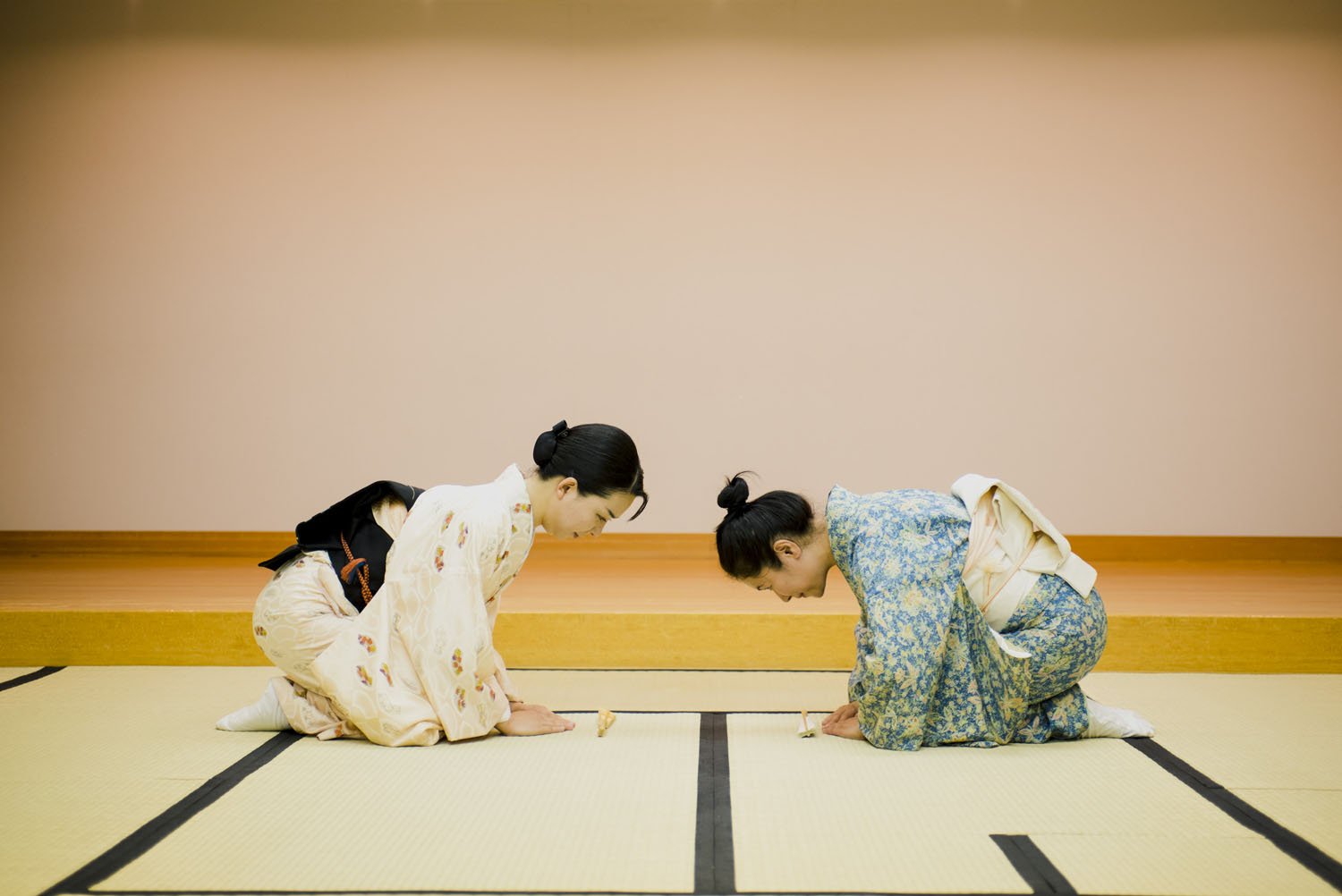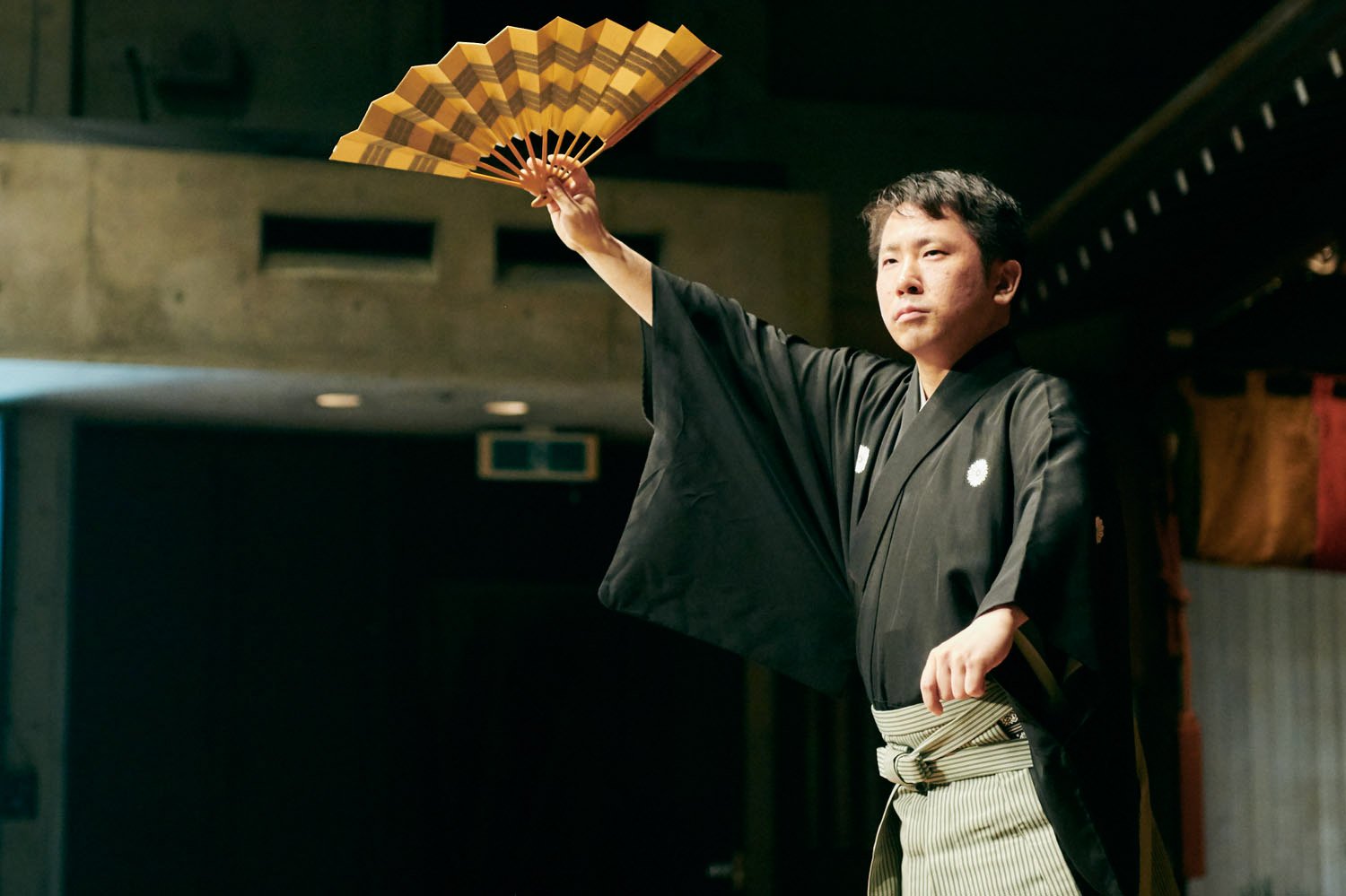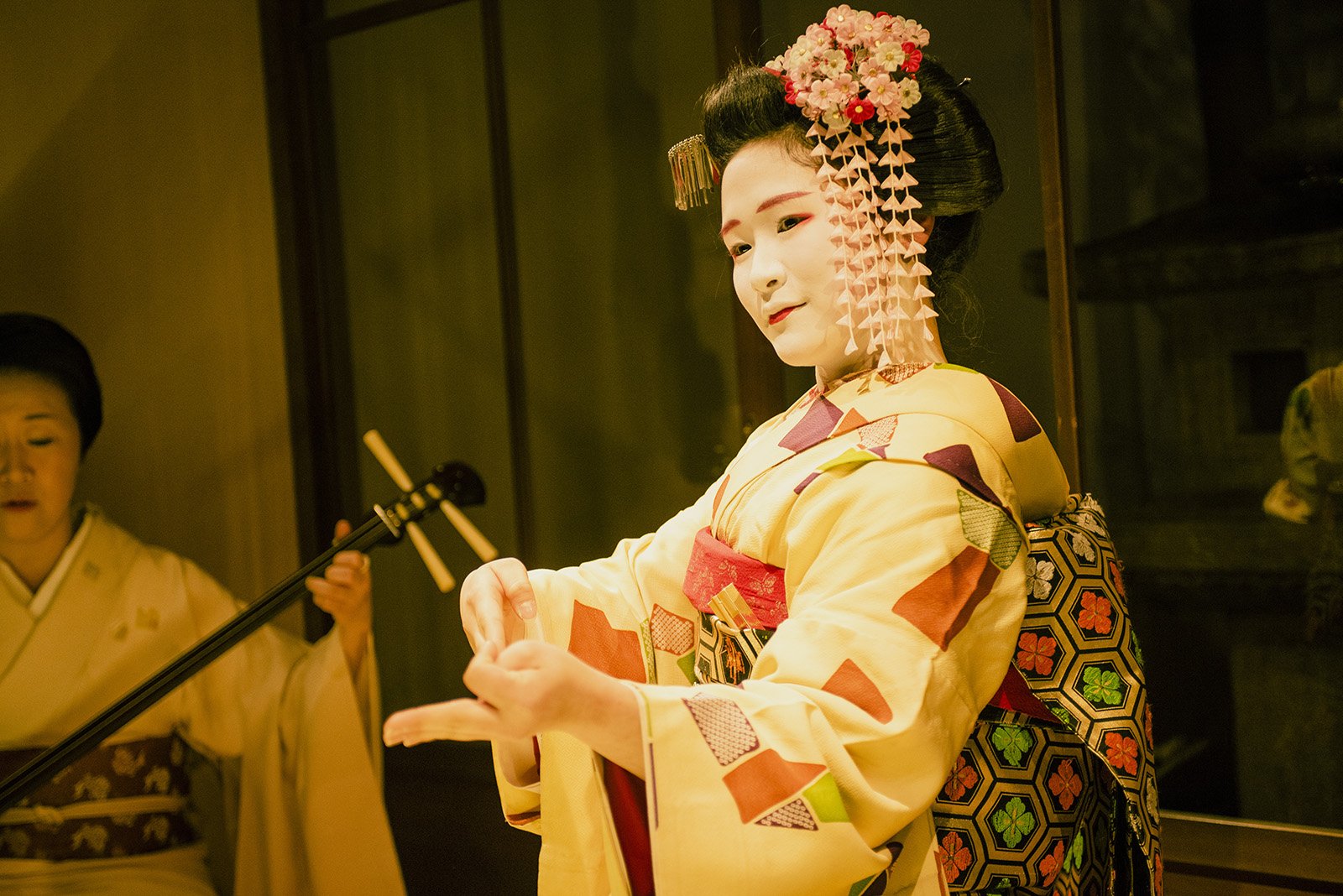The Gender Divide in Kabuki and Japanese Theater: From the Edo Period to Contemporary Japan
Written by Élisabeth Denis
In the early Edo Period, one of Japan's most renowned female performers Izumo no Okuni could be seen staging performances on the dry banks of Kyoto’s Kamo River. Adorned with the typical bright red hakama (a divided skirt) and a white kosode (the antecedent of the kimono), she would wield an ostentatious cypress-wood fan, while adeptly executing each step of her ritualistic dance. Often referred to as the creator of Kabuki Theater, Izumo no Okuni flouted the shogun Tokugawa Ieyasu's patriarchal system and controversially performed for audiences of all backgrounds. Izumo's acts of defiance through performance are but one example of the gender divide in the arts throughout Japan's history.
In both historical and modern contexts, differing cultural expectations for – and treatment of – men and women are not uncommon. In particular, a strict separation of gender roles has existed undeniably throughout Japan's many historical periods. For example, in the Edo Period, men were expected to stand proud beneath kabuto samurai helmets and women to maintain the home and raise the children, unable to own property of their own or to divorce. When it came to divisions of professions, men were largely politicians, police officers, and public-facing officials, while women predominantly were employed as geisha, bar-hostesses, ikebana practitioners, and domestic-facing roles.
These disparate distinctions existed not only in the workspace and the household but also in the realm of Japanese performing arts. Examples abound such as Kabuki's Edo Period transition to an all-male theater practice and the unconventional all-female theater Takarazuka Revue in the Taisho Period of the 1920s. In considering the societal norms and cultural developments in Japan, we can see just how inextricably interwoven this relationship between gender and performance has become.
Performance in the Edo Period
Following nearly 250 years of periodic, destructive wars, Tokugawa Ieyasu established a strict military government in 1603 based on a mix of Confucian and Buddhist tenets and institutions. This system positioned children beneath parents, young below old, and women under men. In accordance with these beliefs, the world of performance was radically altered. Women were excluded from acting in Noh, Kabuki, and Bunraku plays, were prohibited from playing the shakuhachi bamboo flute, and were barred from music festivals and many Shinto shrine rites.
Despite these restrictions, some women still persevered with their performances. Izumo no Okuni, who had previously served as a Shinto shrine miko, turned to her riverbed performances after restrictions were enacted. Further, during her pilgrimages to Kyoto, Izumo would embody a male character, performing her dances in the red-light entertainment districts to much appreciation and recognition. However, this eventually led to early Kabuki’s association with prostitution, resulting in the complete ban of women from the Kabuki stage in 1629. To offset the complete lack of women, male actors started specializing in female roles, establishing the tradition of onnagata 女形 that still exists in modern Kabuki.
By the end of the Edo Period, the social restrictions applied on women were so codified, that morality and etiquette books for women became popular, if not ubiquitous, reading material among the Japanese. One of the most prevalent examples was the Onna Daigaku 「女大学」, written by Neo-Confucianist philosopher Kaibara Ekken in 1729. Onna Daigaku made commonplace the restrictive laws enacted by Tokugawa Ieyasu, particularly that of the Three Obediences, which proscribed that a woman should obey her parents in her youth, her husband in holy matrimony, and her son in old age. These books cemented the starkly developing divide between women and men across the common people and made socially acceptable the support of barring women from both professional and artistic fields.
Development in the Meiji Period
The fall of the Tokugawa Shogunate in 1867 and the start of the Meiji Period brought about the end of Japan’s isolationist policy, the reopening of the borders, and an influx of industrialization and foreign influence. These changes resulted in increased rights and greater educational opportunities for all citizens, as Japan set its sights on westernization.
In one of the most significant developments for Japanese performance, the Meiji Government lifted the bans on women performers. Though public opinion was slow to change, women artists eventually began to perform on koshibai (minor stages). However, the oshibai, the Grand theaters considered the most prestigious and skilled houses, were dominated by men. Eventually, larger feminist counterculture movements began to transpire in response, and by the late 1800s, onna shibai (all-female Kabuki groups) emerged on the scene.
One of the pioneering figures of onna shibai Ichikawa Kumehachi experienced both the ban of women on the kabuki stage and the lifting of restrictions during her lifetime. The philosopher and educator Fukuzawa Yukichi stated that Kumehachi was "one person with two lives," born in the Tokugawa Period and active in the Meiji. At 7 years old, Kumehachi trained in the female-appropriate method of dance and obtained her license by the age of 12. However, 11 years later, once women were allowed on stage, she promptly shifted her artistic focus to acting, becoming the first Kabuki actress to perform primarily in Tokyo’s commercial theaters. By 1870, Kumehachi had gained critical acclaim, known for her metamorphic ability to play both male and female roles. She was the only Kabuki actress to receive attention from the press during the Meiji Period, with countless articles chronicling her remarkable performances.
Despite the prevailing political systems, cultural norms, and societal contexts, gender dynamics within Japanese theater had undergone significant shifts by the end of the Meiji Period. Looking back to the early 1600s and the pioneering efforts of figures like Izumo, Ichikawa's three decades of success in a male-dominated field was a truly remarkable feat. Her influence inspired subsequent generations of women to bravely pursue careers on stage.
Gender and Performance in Contemporary Japan
Following the Meiji Restoration, more women took to the stage, and should be celebrated as a courageous minority who followed their true calling, and persevered despite the numerical disadvantages they faced. To explain the remarkable rise of women in the male-centric traditional Japanese theater, researcher Galia Todorova Gabrovska coined the term Onna Mono 女物, meaning "female things.“ Gabrovska argues that this performance of traditional male roles by women moved beyond imitation and brought innovative practices into Japanese discourse.
One such example is the Takarazuka Revue, an all-female group formed during the late Meiji Period that has continued to enjoy incredible success even today. A blend of traditional Japanese and modern Western performance styles, the troupe excels in performing traditional plays, like The Tale of Genji, and contemporary musicals, such as Guys and Dolls. Equipped with 5 troupes of 80 members each, performances can be viewed both in Tokyo and Takarazuka theaters, internationally, on television, and they are even broadcast on the radio.
In addition to performing, female artists have found behind-the-scenes avenues to contribute to the field of theater. Other notable figures include Azuma Tokuho, leader of the all-women Azuma Kabuki troupe; Rio Kishida, a playwright and director who explored women's challenges in Japanese society; Koharu Kisaragi, a playwright, essayist, and director; and Ai Nagai, a stage director and playwright.
As a result of the contributions these women made to Japanese performance, the gender gap in theater has significantly narrowed compared to the early Edo period. While women may not hold the same status they once did during Kabuki's inception, they continue to play a vital role. Undeniably, gender still remains irrevocably linked to performance in contemporary Japan – however, the relationship has been redefined from one of enforced restrictions to that of innovation and ingenuity. The story of Kabuki is evolving, with both men and women coexisting alongside onna shibai troupes, onnagata performers, and traditional all-male groups, all contributing to the rich tapestry of Kabuki's unique aesthetics.
About the Author: Elisabeth Denis is a photojournalist, filmmaker, and interdisciplinary artist interested in confessional writing, relational aesthetics, interactive installations, political and social arts. She previously published as a columnist for the Raglan Chronicle in New-Zealand. Her work as an artist was mentioned in the National New-Zealand Herald, Waikato Times, Local RAG, and Beautiful Bizarre magazine, Women in film & television New-Zealand, STUFF NZ, and at the Raglan Radio.
Edited by Eli Troen and Taylor Bond







